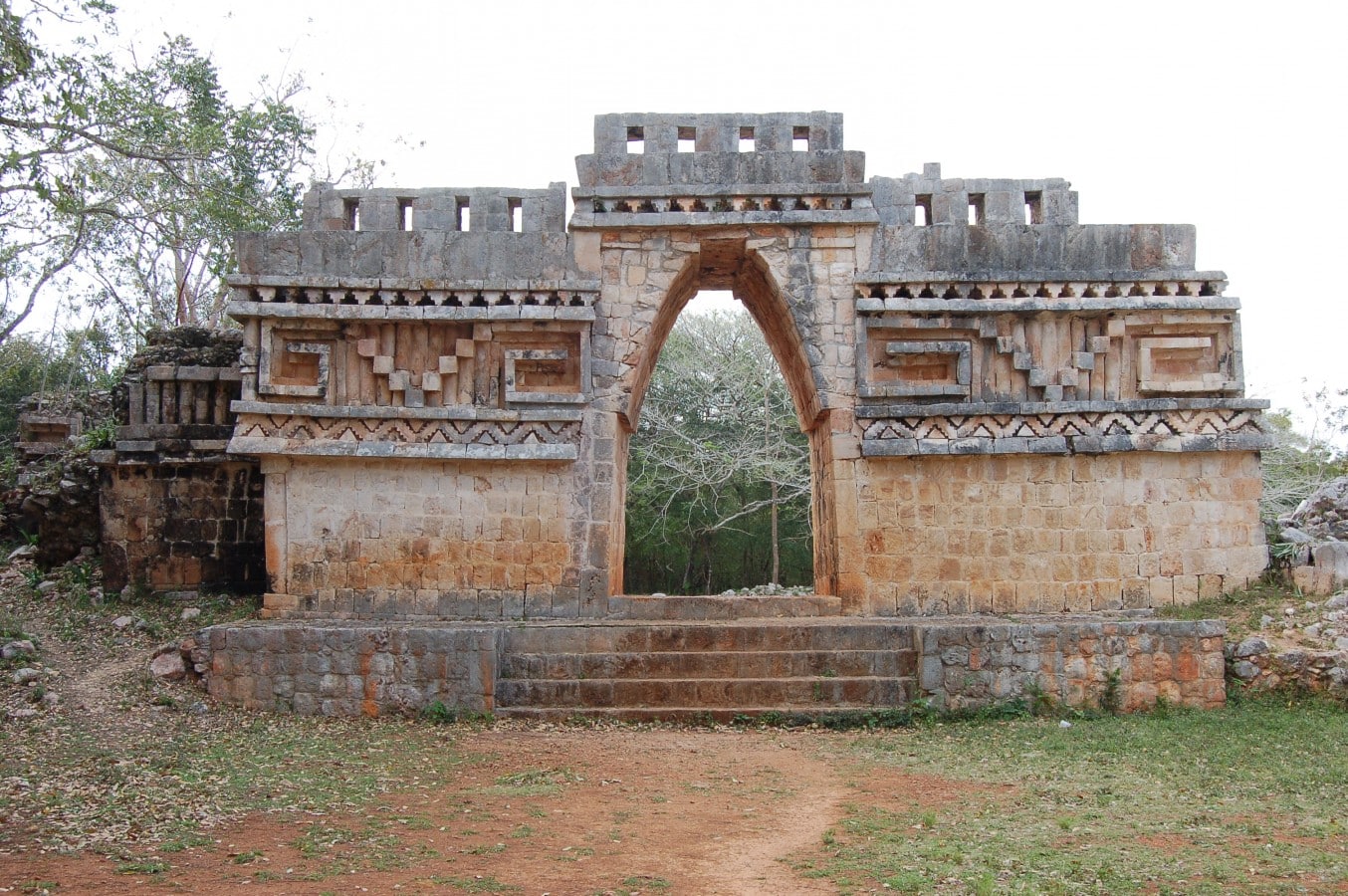The Mayan Arch of Labna

Tucked between Campeche and Mérida, the ancient Mayan city of Labna stands as one of the lesser-known but incredibly fascinating ruin sites of the Yucatán Peninsula. With its stunning architecture, particularly the iconic Mayan arch, Labna offers visitors a glimpse into the ingenuity and artistry of the ancient civilization. Part of the famous Puuc Route, Labna is a must-see for those exploring the rich history and culture of the Mayan world. Here are some tips on the Mayan Arch of Labna.
A Marvel of Architecture
At the heart of Labna’s architectural splendor lies the celebrated Mayan arch, a striking example of the sophisticated engineering and artistic prowess of the Mayans. Unlike traditional arches that use keystones, the Mayans developed a “false” arch method, stacking stones layer by layer until they formed an angled vault. The Mayan arch at Labna is particularly exquisite, adorned with intricate carvings and geometric designs that showcase the civilization’s attention to detail and cosmic symbolism. Standing under the arch, one can imagine the grandeur of the city that once bustled with life around it.
The Mayan Arch of Labna. Part of the Puuc Route
Labna is an essential stop along the Puuc Route, a scenic and culturally rich route that winds through some of the Yucatán Peninsula’s most stunning Mayan sites. The Puuc region is known for its hilly terrain—unusual for the generally flat landscape of the Yucatán—and for the distinct architectural style that flourished here. Characterized by highly decorated façades, columns, and elaborate friezes, the Puuc style is on full display at Labna, making it an architectural treasure trove. Along with other nearby ruins like Uxmal and Kabah, Labna helps tell the story of the Maya’s sophisticated urban planning and spiritual life.
The Mayan Arch of Labna. Nearby Towns for a Bite and a Rest
For those looking to explore Labna and its surroundings, nearby towns such as Oxkutzcab, Ticul, and Maxcanú offer a warm welcome. Each town provides a taste of local Yucatecan culture, from traditional food to cozy accommodations.
- Oxkutzcab: Known as the “orchard of the Yucatán” for its vibrant fruit markets, Oxkutzcab is a great stop for a fresh, local meal. Try the region’s famous citrus fruits, or enjoy traditional Yucatecan dishes such as cochinita pibil. The town also offers affordable lodging options for those looking to stay the night before continuing their journey.
- Ticul: Just a short drive from Labna, Ticul is renowned for its pottery and shoe-making industries, offering visitors a chance to take home handcrafted souvenirs. It’s also a fantastic place to savor local cuisine, with small restaurants serving up delicious regional specialties. Ticul has a variety of hotels and inns, making it a convenient base for exploring the Puuc Route.
- Maxcanú: Further along the route, Maxcanú offers a quieter stop with its charming streets and laid-back vibe. Visitors can enjoy a simple yet authentic dining experience in one of the town’s eateries before resting in one of its comfortable guesthouses or inns. It’s a great place to unwind and reflect on the rich history of the area.
Labna and its surrounding region provide a unique opportunity to connect with the past while enjoying the warmth of Yucatecan hospitality. Whether you’re marveling at the ancient arch or exploring the nearby towns, a visit to this corner of the Yucatán promises an unforgettable experience steeped in history and culture.
